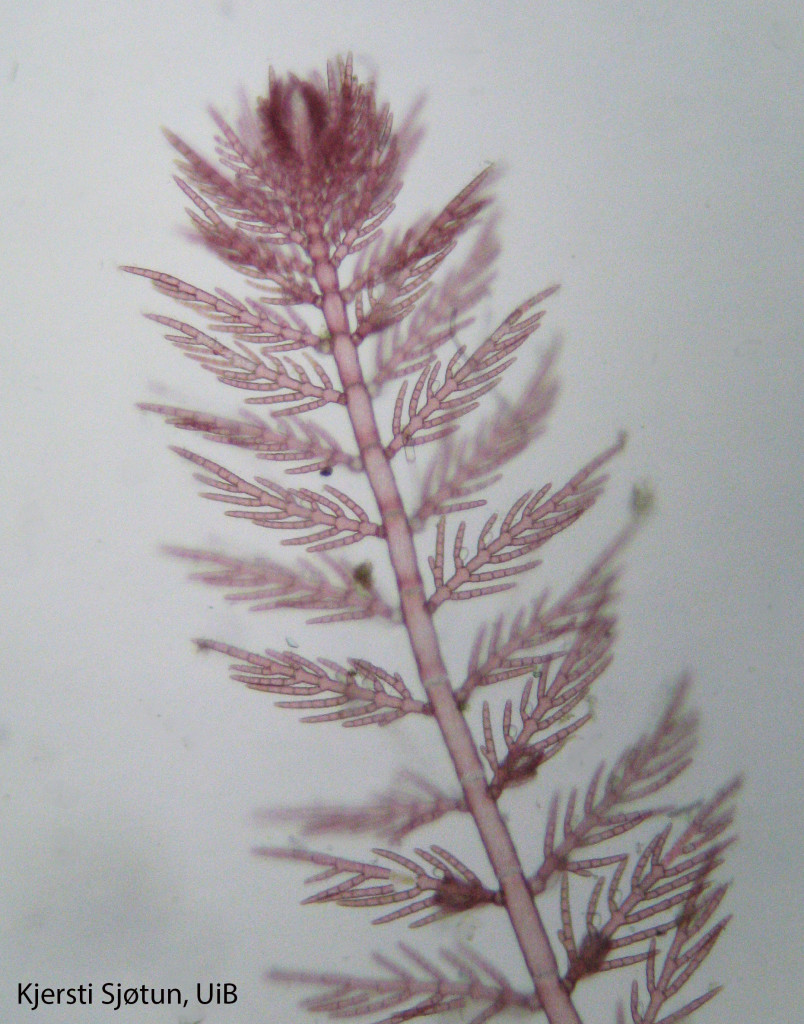Anthithamnion nipponicum is a small red alga, originally from the Pacific. During the last decade it has been recorded in the Mediterranean, Spain, and on the coast of North America.
A. nipponicum was first found in Norway in 2007, at Stora Karlsøy in Hordaland. During that year it was found in April and September as an epiphyte in the intertidal zone (Rueness et al. 2007).
Now it has been found for a second time, again during an algal biology course at the University of Bergen. In September, kelp forests around Lyroddane (Korsfjorden, Hordaland) were dredged for samples, and a patch of A. nipponicum was found growing epiphytically on some Laminaria hyperborea blades.
The finding of A. nipponicum in 2007 led the discoverers to believe that its appearance could be linked to the warm temperatures that year. This second finding fits with that idea, given the unusually warm temperatures in western Norway over this summer.

Antithamnion nipponicum
More information on this species:
- The Norwegian Seaweeds Group at seaweeds.uib.no: Antithamnion nipponicum
- Rueness, J., Heggøy, E., Husa, V., Sjøtun, K. (2007) First report of the Japanese red alga Antithamnion nipponicum (Ceramiales, Rhodophyta) in Norway, an invasive species new to northern Europe. Aquatic Invasions 2(4): 431-434
